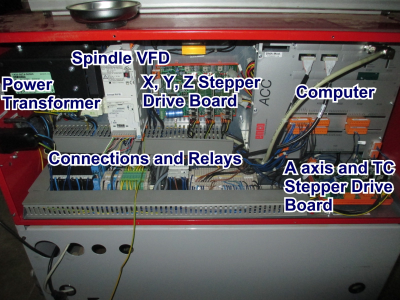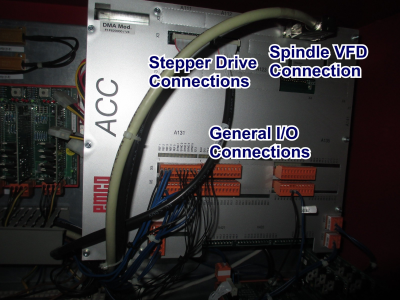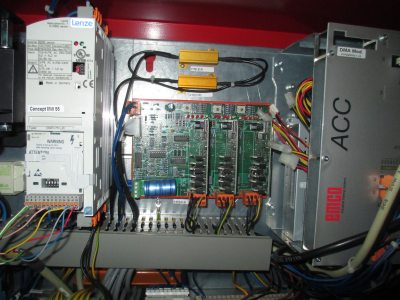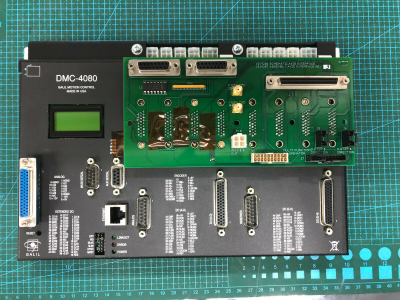- Joined
- Feb 8, 2014
- Messages
- 11,176
A little update:
The USB floppy drive worked and I got the software to load properly. After I repaired the machine door so the limit switches would work I was able to do some basic operations. The machine homes and jogs properly, and I managed to release the tool from the spindle.
But..... I have to say I'm rapidly getting frustrated with the Fanuc emulator software. I really want to use the machine, not try to learn Fanuc software. So far I have not been able to get it to load a tool, it seems that there is no button that allows manual tool changes, so I assume it has to be done programmatically using a M6 tool change routine. No reference in the book for manual tool changes.
I'll play with it a bit more before I rip out the controls and install my own system.
The USB floppy drive worked and I got the software to load properly. After I repaired the machine door so the limit switches would work I was able to do some basic operations. The machine homes and jogs properly, and I managed to release the tool from the spindle.
But..... I have to say I'm rapidly getting frustrated with the Fanuc emulator software. I really want to use the machine, not try to learn Fanuc software. So far I have not been able to get it to load a tool, it seems that there is no button that allows manual tool changes, so I assume it has to be done programmatically using a M6 tool change routine. No reference in the book for manual tool changes.
I'll play with it a bit more before I rip out the controls and install my own system.






